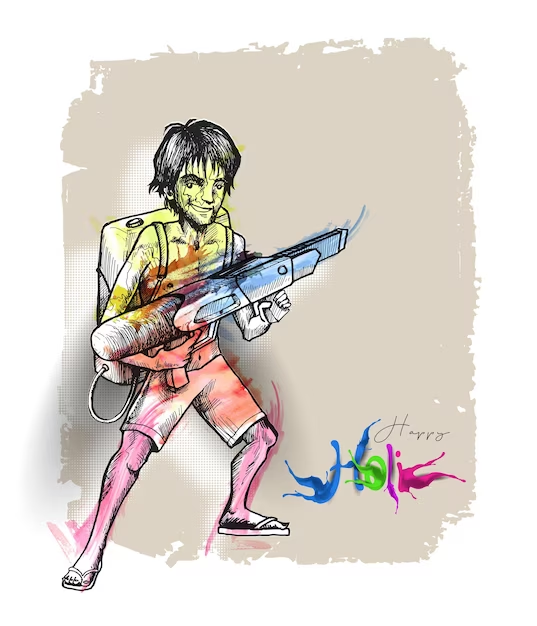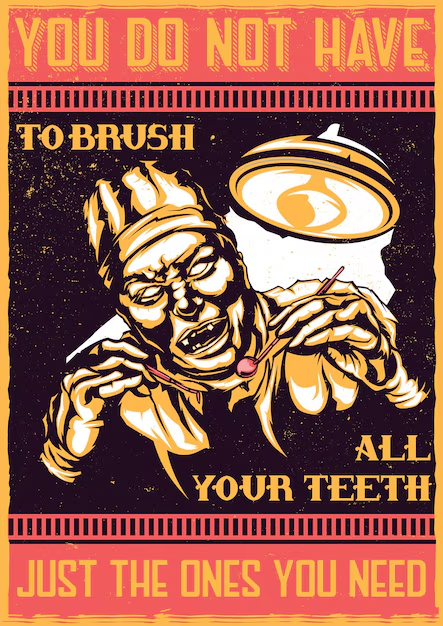What is Anarchist Graphic Design?
Graphic design is often seen as a tool for branding, marketing, or shaping visual identities in commercial or institutional spaces. But what happens when this tool breaks free from corporate and institutional control? Enter anarchist graphic design, a practice that challenges conventions, redefines the role of the designer, and amplifies the voices of dissent.
Defining Anarchist Graphic Design
At its core, anarchist graphic design is the visual expression of anarchist principles. These principles include anti-authoritarianism, mutual aid, self-organization, and the rejection of hierarchical structures. In practice, this means creating graphics that empower communities, spread revolutionary ideas, and disrupt the status quo.
Unlike traditional design, which often serves commercial interests, anarchist graphic design prioritizes collective action and grassroots movements. It operates in the realms of zines, posters, street art, protest banners, and digital media—all designed to inspire, inform, and mobilize.
The Origins of Anarchist Graphic Design
Anarchist graphic design draws its roots from political art and propaganda. Movements like Dada, Constructivism, and the punk aesthetic have all influenced its evolution. Historically, anarchist visual communication has appeared in posters, leaflets, and banners advocating for workers’ rights, anti-fascist resistance, and social justice causes.
For instance, the Spanish Civil War (1936-1939) saw an explosion of anarchist posters promoting revolutionary ideals. Designed by collectives and individuals, these works blended bold typography, striking imagery, and a sense of urgency—aesthetic choices that remain central to anarchist design today.
Key Characteristics of Anarchist Graphic Design
1. DIY Ethos
The do-it-yourself (DIY) ethos is fundamental to anarchist design. By embracing DIY, creators reject the corporate monopoly over production and distribution. Zines, handmade posters, and stencil art are quintessential examples. These mediums are accessible, cost-effective, and encourage participation, making them perfect for grassroots activism.
2. Bold and Direct Visuals
Anarchist graphic design is unapologetically bold. High-contrast imagery, stark color schemes (often black and red), and direct language dominate. The goal is to grab attention and communicate ideas quickly and effectively.
3. Subversive Use of Symbols
Anarchist graphic designers frequently repurpose traditional symbols or create new ones. The circled “A”, black flags, and broken chains are iconic representations of anarchist ideals. These symbols—instantly recognizable and rich with meaning—serve as rallying points for movements worldwide.
4. Decentralization and Collaboration
Anarchist design often emerges from collective efforts rather than individual authorship. Collaborative projects emphasize the principle of mutual aid, where skills and resources are shared to create impactful visuals. The lack of a centralized authority fosters diversity in style and approach.
The Role of Technology
In the digital age, anarchist graphic design has found new avenues of expression. Social media, open-source design tools, and digital printing have democratized access to design resources. Activists can now create and distribute materials faster and reach a global audience.
Digital platforms also facilitate collaboration. Online forums and collectives share templates, design tips, and strategies, ensuring that the spirit of anarchist design remains accessible to anyone with a message to share.
Contemporary Examples
1. Protest Movements
From Occupy Wall Street to Extinction Rebellion, contemporary protest movements have embraced anarchist graphic design. Their posters, stickers, and social media graphics often feature minimalist, impactful designs that encapsulate complex messages in simple, digestible visuals.
2. Street Art and Murals
Street art has become a powerful medium for anarchist expression. Artists like Banksy and collectives like RISEUP and Guerrilla Girls use public spaces to critique authority, capitalism, and social injustices, blending art with activism.
3. Zine Culture
The resurgence of zine culture has reinvigorated anarchist graphic design. Zines offer a tactile, intimate way to disseminate ideas, and their handmade aesthetic reinforces the DIY ethos central to anarchism.
Challenges and Criticisms
1. Accessibility
While anarchist graphic design aims to be inclusive, access to tools and resources can still be a barrier. Bridging this gap requires ongoing efforts to provide open-source tools and workshops that empower marginalized voices.
2. Co-option
The aesthetics of anarchist design are often co-opted by mainstream brands seeking to capitalize on its rebellious allure. This appropriation dilutes its revolutionary intent and commodifies its symbols.
3. Balancing Art and Activism
Striking a balance between artistic expression and effective activism can be challenging. Anarchist graphic design must constantly evolve to remain relevant and impactful without losing its artistic edge.
Why Anarchist Graphic Design Matters
In a world increasingly dominated by corporate interests, anarchist graphic design offers a refreshing counter-narrative. It reminds us that design is not just a commercial tool but a powerful medium for social change. By prioritizing community, equality, and freedom, anarchist graphic design challenges us to rethink the role of creativity in shaping our world.
Whether it’s a hand-painted banner at a protest or a digitally designed meme shared online, anarchist graphic design continues to inspire and mobilize. It’s a testament to the enduring power of art and design to envision and create a better, more just society.
Visual Examples to Inspire You
-
- Poster Art: Bold typography with slogans like “No Gods, No Masters” paired with striking imagery.
-
- Street Art: Stencils featuring anti-authoritarian symbols or murals that tell stories of resistance.
-
- Zines: Handcrafted booklets combining collages, illustrations, and text to communicate anarchist ideas.
Embracing Chaos: The Art and Ideology of Anarchist Graphic Design
Graphic design has long been a medium for communication, persuasion, and expression, but within the realm of anarchist graphic design, it transcends mere aesthetics to become a powerful tool of rebellion, disruption, and liberation. Anarchist graphic design isn’t just about creating visuals—it’s about dismantling the structures of oppression, challenging authority, and amplifying voices that have been silenced. This blog will explore the essence of anarchist graphic design, its roots, techniques, and relevance in today’s sociopolitical landscape
What is Anarchist Graphic Design?

- Anarchist graphic design is not bound by a single style, color palette, or set of rules. It thrives on chaos, individuality, and raw emotion. At its core, it is a form of visual activism that seeks to question, disrupt, and dismantle oppressive systems. Whether it’s a provocative poster on a city wall, a zine passed hand-to-hand, or digital art shared on social media, anarchist design challenges the status quo and inspires action.
- This design ethos aligns with anarchism’s principles of self-organization, mutual aid, and resistance to hierarchical systems. Anarchist designers often reject the commercialization of art and design, using their work to build community, educate, and mobilize rather than profit.
Historical Roots of Anarchist Graphic Design
- The history of anarchist graphic design is deeply intertwined with the broader history of social movements. From the bold woodcut posters of 19th-century labor movements to the hand-drawn zines of punk subcultures, visual design has played a critical role in spreading anarchist messages.
- The Labor Movement: In the late 1800s, anarchist graphics often featured stark black-and-white imagery, bold typography, and symbols like the raised fist and the black flag. These visuals were printed on pamphlets, newspapers, and posters to rally workers and spread anti-capitalist messages.
- The Punk Aesthetic: In the 1970s and 1980s, punk rock brought a resurgence of anarchist ideas, reflected in gritty, DIY aesthetics. Cut-and-paste collage techniques, ransom-note-style typography, and raw, hand-drawn illustrations became hallmarks of this era.
- Digital Anarchy: Today, digital platforms have become a new canvas for anarchist graphic design. Memes, GIFs, and digital posters allow messages to reach a global audience, often circumventing traditional media gatekeepers.
Key Elements of Anarchist Graphic Design
- Anarchist graphic design defies standardization, but several recurring themes and techniques define its visual language:
- DIY Aesthetics: Anarchist design often embraces imperfections, hand-drawn elements, and collage techniques. This approach rejects the polished, corporate look of mainstream design and emphasizes authenticity and accessibility.
- Bold Typography: Large, aggressive fonts are a common feature, conveying urgency and defiance. Type becomes a visual weapon, shouting messages rather than whispering them.
- Symbolism: Anarchist imagery frequently incorporates symbols like the circled “A,” black and red color schemes, and motifs of resistance such as chains, flames, and barricades.
- Collage and Assemblage: The cut-and-paste aesthetic—literally and metaphorically—reflects a rejection of consumerist culture by repurposing existing materials into new, subversive messages.
- Anti-Capitalist Themes: Many designs critique consumerism, environmental destruction, and systemic oppression. The visuals often juxtapose dystopian imagery with calls for collective action and hope for a liberated future.
Anarchist Graphic Design in Action
Anarchist graphic design finds its home in a variety of mediums, each with its own strengths:
Street Art: Posters, stickers, and graffiti bring anarchist messages to public spaces. The street becomes a canvas for dialogue, dissent, and disruption.
Zines: Self-published booklets are a cornerstone of anarchist design, combining text, art, and photography to educate and inspire.
Social Media: Platforms like Instagram, Twitter, and TikTok amplify anarchist design, making it accessible to a global audience and fostering digital solidarity.
Merchandise: T-shirts, patches, and buttons serve as wearable art, spreading anarchist messages while fostering community identity.
Challenges and Critiques

While anarchist graphic design is a potent tool for activism, it is not without its challenges. Some critiques include:
Co-optation: Anarchist aesthetics are often appropriated by mainstream brands and commodified, diluting their revolutionary intent.
Accessibility: DIY methods can be exclusionary if they require specific skills or resources, limiting participation to those with prior design knowledge.
Echo Chambers: In the digital age, anarchist design risks preaching to the converted, reaching only those who are already sympathetic to its messages.
To address these challenges, designers can focus on fostering inclusivity, adapting their work for diverse audiences, and maintaining the integrity of their messages in the face of commodification.
Why Anarchist Graphic Design Matters Today
In an era of increasing authoritarianism, environmental crises, and economic inequality, anarchist graphic design serves as a beacon of resistance. It empowers marginalized communities, amplifies underrepresented voices, and challenges the narratives imposed by dominant powers.
Moreover, the accessibility of digital tools has democratized design, enabling more people to contribute to the anarchist visual landscape. Open-source software, online tutorials, and collaborative platforms allow creators to share skills and resources, embodying the anarchist principle of mutual aid.
Conclusion: Designing for Liberation
Anarchist graphic design is more than an art form—it’s a call to action. It invites us to question authority, imagine alternatives, and participate in collective liberation. Whether you’re a seasoned designer or a curious newcomer, the world of anarchist graphic design offers endless possibilities for creative resistance.
To embrace this ethos, start small. Create a poster for a local protest, design a zine on an issue you’re passionate about, or share anarchist art online. Remember, the power of anarchist graphic design lies not in perfection, but in its ability to inspire, disrupt, and connect.
So grab your pens, scissors, or digital tools, and start creating. The revolution needs your voice—and your art.


